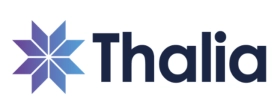Design Migration isn’t just a sprint – It’s a heptathlon
When migrating analog ICs to a new node, the complexity isn’t in just one task—it’s in all of them. From device analysis and selection to schematic porting, layout transformation to parasitic-aware verification, each step has unique challenges. Among these, adapting the metal stack stands out as a particularly intricate and often underestimated aspect of the migration process.
Why is the Metal Stack such a problem?
The metal stack defines how signals, power, and ground move through the chip. Each process node— offers different metal counts, materials, thicknesses, and fill rules. Even a seemingly small change—like needing to promote a net to a higher layer—can potentially trigger:
- DRC violations
- Via resistance concerns
- Crosstalk and shielding issues
- Violations of metal density and CMP rules
- Rework in layout and full-chip LVS/PEX verifications
For analog designers, who rely on predictable parasitics and symmetry, this can significantly disrupt performance. It’s not copy-paste. It’s weeks of re-engineering.
This is where Thalia’s AMALIA Platform excels
AMALIA doesn’t promise a one-click fix—instead, it blends intelligent automation with domain-specific design expertise.
When modifying the metal stack during IC migration, AMALIA addresses current density and electromigration challenges with a robust, verification-aware workflow that:
- Tracks and enforces design rule constraints and routing configurations to optimize via array placement as part of layout changes.
- Automates design rule corrections with minimal manual intervention, leveraging two AI-assisted algorithms—one for accurate DRC recognition and another for intelligent DRC fixing.
- Ensures electromagnetic conformance after changes to the vias array and connections to the top metal layer.
- Maintains compliance with DRC, LVS, and PEX checks throughout the process.
Our approach respects the analog engineer’s need for control while dramatically reducing effort and risk. Where a manual approach will take many days or several weeks, AMALIA will help you achieve the Metal Stack changes to hours or a few days.
Think of AMALIA as your AI powered IC design migration co-pilot—one that doesn’t get tired, skip checks, or overlook corner cases.
If the IC industry hosted a Design Migration Heptathlon, AMALIA wouldn’t just compete—it would take first in every event.
Related Semiconductor IP
- Ultra-Low-Power LPDDR3/LPDDR2/DDR3L Combo Subsystem
- Parameterizable compact BCH codec
- 1G BASE-T Ethernet Verification IP
- Network-on-Chip (NoC)
- Microsecond Channel (MSC/MSC-Plus) Controller
Related Blogs
- Automatically generated analog IP: How it works in SoC designs
- Showcasing AI-Driven Analog Design Migration at Samsung SAFE Forum
- Process technology analysis: Navigating analog IP migration with precision
- Applied AI in Analog IC Design Migration
Latest Blogs
- Physical AI at the Edge: A New Chapter in Device Intelligence
- Rivian’s autonomy breakthrough built with Arm: the compute foundation for the rise of physical AI
- AV1 Image File Format Specification Gets an Upgrade with AVIF v1.2.0
- Industry’s First End-to-End eUSB2V2 Demo for Edge AI and AI PCs at CES
- Integrating Post-Quantum Cryptography (PQC) on Arty-Z7
